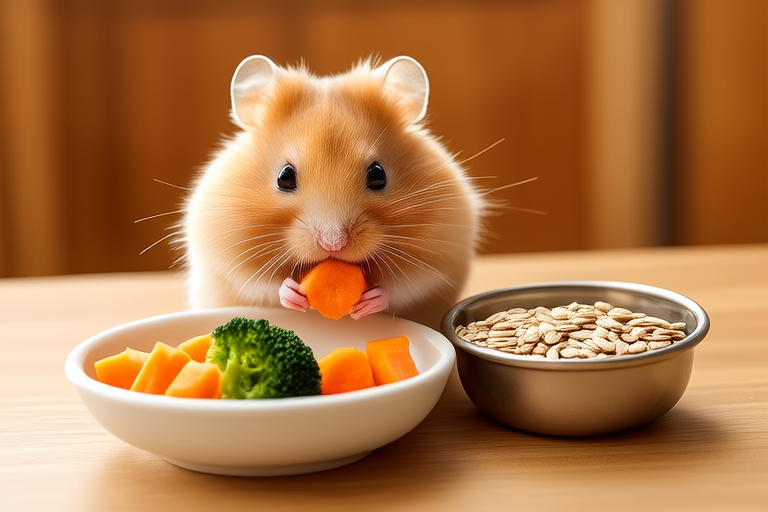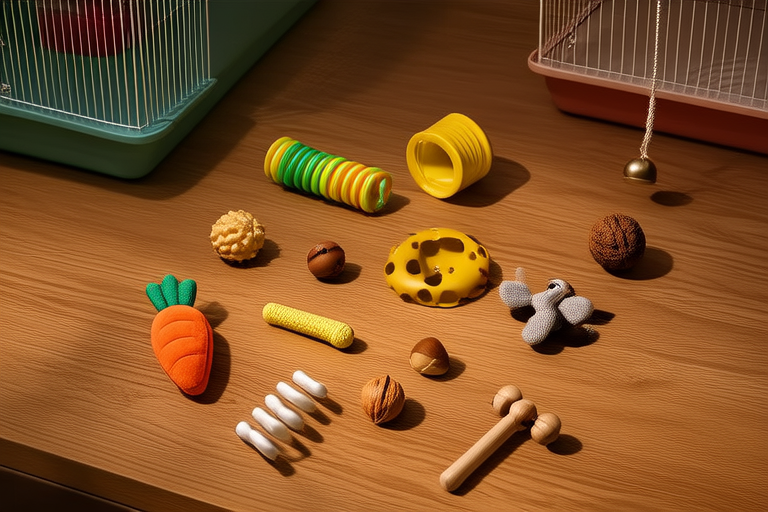
The Ultimate Guide to Keeping Your Hamster Active and Healthy
Welcome to the comprehensive guide that will help you ensure your hamster leads a happy, healthy, and active life. Whether you’re a first-time owner or have been taking care of hamsters for years, this guide offers practical advice on creating the best environment for your furry friend.
Section 1: Suitable Housing
Your hamster’s home is their castle, and it’s essential to choose the right one. Opt for a spacious cage with a solid floor to prevent injuries from wire-bottomed cages. A minimum size of about 36 inches long by 18 inches wide and 12 inches high is ideal for most species. Ensure there’s adequate ventilation and that the cage is placed in a quiet area away from direct sunlight and drafts.
In addition to the cage itself, provide nesting boxes, tunnels, and platforms for climbing and hiding. These items stimulate your hamster’s natural instincts and keep them entertained. Regularly clean the cage to maintain hygiene, as hamsters are generally tidy creatures but still require assistance to stay clean.
Section 2: Proper Diet
A balanced diet is crucial for your hamster’s health. A good quality hamster mix, which includes seeds, grains, and pellets, forms the foundation of their diet. However, avoid mixes with too many nuts and sunflower seeds, as these can lead to obesity. Supplement their diet with fresh vegetables like carrots, broccoli, and spinach, but introduce new foods gradually to prevent digestive upset.
Fruits should be given sparingly due to their sugar content. Always provide fresh water daily, either in a sipper bottle or a heavy bowl to prevent tipping. Rotate different fruits and vegetables every few days to keep meals interesting and nutritionally diverse.
Section 3: Exercise Needs
Hamsters need regular exercise to maintain their physical health. In addition to their cage setup, provide a running wheel. Choose a solid-surfaced wheel to prevent foot injuries. Rotate toys and add new items periodically to keep your hamster mentally stimulated.
Consider supervised playtime outside the cage to explore a safe, hamster-proofed area. This activity mimics their natural behaviors and provides mental stimulation. Always supervise playtime to ensure safety and prevent accidental escapes.
Section 4: Grooming Tips
Regular grooming helps maintain your hamster’s coat and prevents skin problems. Use a soft-bristled brush to gently brush their fur once a week. Trim their nails if necessary, but be careful not to cut the quick, which contains blood vessels. If unsure, consult a veterinarian for guidance.
Bathing is unnecessary unless your hamster becomes excessively dirty. Over-bathing can strip their natural oils, leading to skin issues. Instead, use a damp cloth to gently wipe their face and paws. Always dry them thoroughly afterward to prevent chills.
Section 5: Common Health Issues
Understanding common health issues can help you recognize potential problems early. Obesity is prevalent among hamsters, especially those with limited exercise. Monitor their weight and adjust their diet and exercise accordingly. Dental issues are another concern, as hamsters’ teeth grow continuously. Provide chew toys and sticks to help wear down their teeth naturally.
Respiratory infections can occur if the cage is too cold or damp. Keep the temperature between 65-75°F (18-24°C) and ensure good ventilation. Diarrhea may indicate dietary issues or parasites. Consult a veterinarian if symptoms persist or worsen. Regular check-ups with a vet can help catch any potential health issues before they become serious.
Section 6: Signs of a Healthy Hamster
A healthy hamster displays certain behaviors and physical characteristics. They should be alert, active, and curious, exploring their environment and interacting with toys. Their coat should be shiny and free from bald patches or sores. Their eyes should be clear and bright, without discharge. Regular bowel movements and consistent eating habits are also indicators of good health.
If you notice changes in behavior, appetite, or physical appearance, consult a veterinarian promptly. Early intervention can often prevent more severe health issues.
Section 7: Maintaining a Stimulating Environment
To ensure your hamster’s mental and physical well-being, create a stimulating environment. Rotate toys and provide new ones periodically to prevent boredom. Consider adding items like cardboard rolls, wooden blocks, and puzzle feeders that encourage problem-solving and exploration.
Establish a routine for feeding and playtime to provide structure and predictability. Spend time interacting with your hamster, handling them gently and regularly. This interaction builds trust and strengthens the bond between you.
By following these guidelines, you can provide your hamster with a loving and enriching environment that promotes their overall health and happiness. Remember, each hamster is unique, so observe your pet closely and tailor their care to meet their specific needs.





